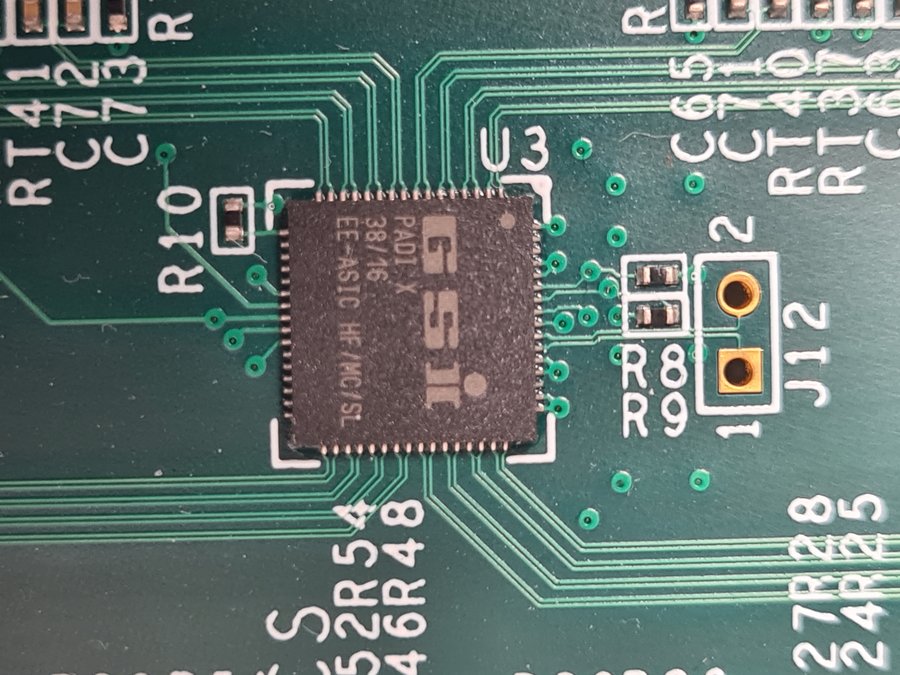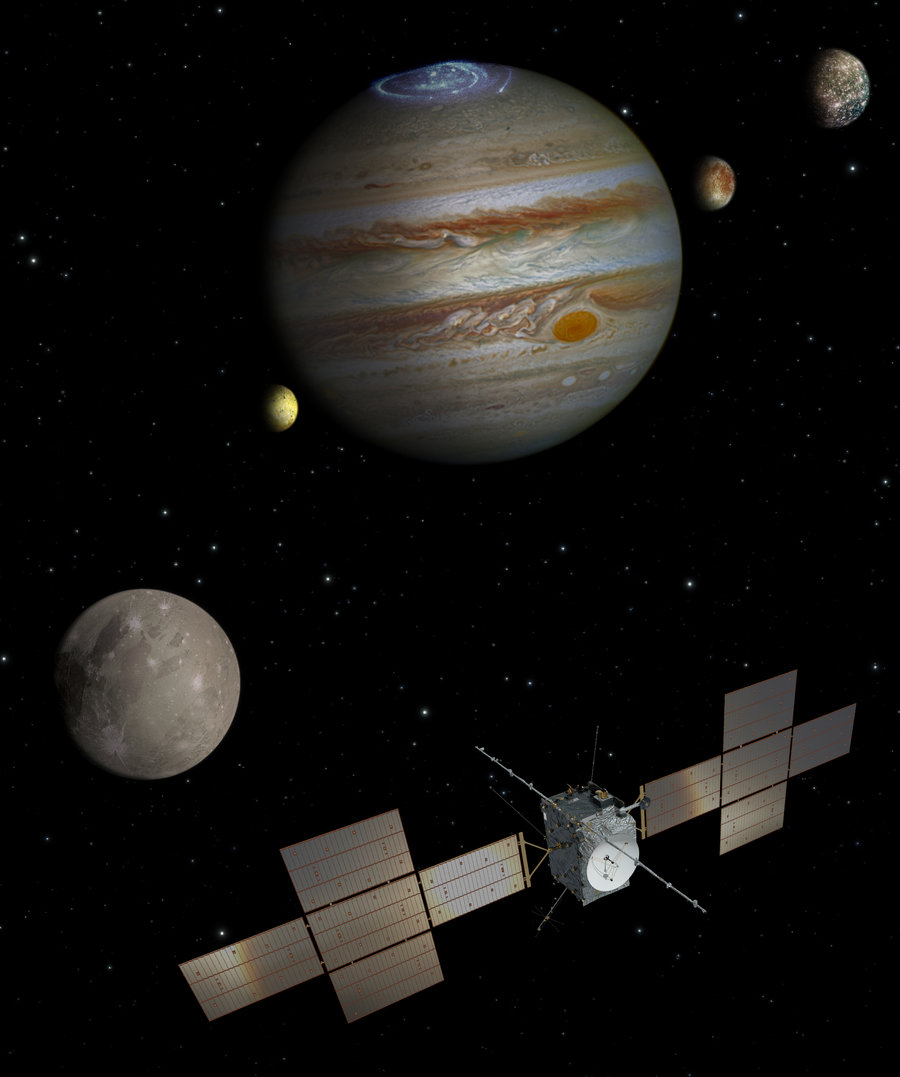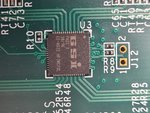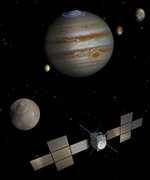A part of FAIR in Space: ESA's “Juice” Jupiter mission has high-tech on board, specially developed for the CBM experiment
20.06.2023 |
The recent launch of ESA's Juice spacecraft marked the beginning of an ambitious journey that aims to explore the mysteries of Jupiter's icy moons. It will be eight years on the road, traveling billions of kilometers along the way, and is designed to find out whether conditions for life could exist on Jupiter's moons. A cutting-edge high-tech development from GSI and FAIR is also on board during this unique research expedition.
In a group of detectors carried by “Juice”, a charge sensitive amplifier readout chip from GSI/FAIR is used. The so-called PADI-X ASIC was developed within the CBM experiment. CBM (Compressed Baryonic Matter) is one of the central research pillars of the international accelerator center FAIR, which is currently being built at GSI. The chip was developed in both GSI scientific-technical department Experimental Electronics and Detector Lab, in collaboration with senior scientist Dr. Mircea Ciobanu (Institute of Space Science, Romania and University of Heidelberg).
At the launch of Juice from the European Spaceport in French Guiana, Carole Mundell, ESA's Director of Science, emphasized: “Today, we have sent a suite of ground-breaking science instruments on a journey to Jupiter’s moons that will give us an exquisite close-up view that would have been unimaginable to previous generations. The treasure trove of data that ESA Juice will provide will enable the science community worldwide to dig in and uncover the mysteries of the jovian system, explore the nature and habitability of oceans on other worlds and answer questions yet unasked by future generations of scientists.”
The Scientific Director of GSI and FAIR, Professor Paolo Giubellino, is delighted about the participation in this very exciting space mission: “The European Space Agency ESA has been working closely with GSI/FAIR for many years to jointly advance the various aspects of space research. For example, cosmic ray research is a crucial contribution to ensure that astronauts and satellites in space have the best performance when exploring our solar system. In addition, artificial hibernation, another research field with strong GSI expertise, could become a promising key technology for the future of spaceflight. ESA and FAIR have since a few years a joint summer school dedicated to radiation effects in space. I am very pleased that a high-tech application developed for the future FAIR accelerator center will now continue this successful series and be part of the Jupiter exploration.”
On its way to the biggest planet in our solar system, the "Juice" probe has ten instruments on board, primarily to analyze Jupiter's large moons. Water is presumed to be present there under a thick layer of ice, and thus a prerequisite for life. The instruments come from European partners and the U.S. space agency Nasa and enable numerous investigations, such as laser or radar measurements, by which data can also be collected under the ice layer.
The PreAmplifier-DIscriminator chip (PADI) is an application-specific integrated circuit (ASIC) that was originally designed as a general-purpose chip for GSI/FAIR. It is used as front-end electronics for reading out the timing resistive plate chambers in the time-of-flight (TOF) wall of the CBM experiment for FAIR. Thus, originally developed for high-energy physics experiments carried out at ground facilities, it turned out that PADI is also suitable for space experiments, and PADI-X was selected and qualified as front-end electronics for one sensor on the “Juice” mission, the PEP/JDC instrument. PEP (Particle Environment Package) is a particle spectrometer for measuring neutral and charged particles in the Jupiter system.
The PEP instrument consists of a total of two units with six different sensors; the scientific goals of the instrument are to study Jupiter's moons Ganymede, Callisto, Europa and Io, as well as Jupiter's magnetosphere.
Before the “Juice” probe can take up its mission at Jupiter, however, it still has a long way to go. During its eight-year journey to Jupiter, it must fly once around Venus and three times around Earth to gain speed. After its arrival in 2031, the scientists will be able to take a close look at Jupiter's moons, among other things, and begin their analyses - with the help of high-tech from GSI/FAIR developments. (BP)
Further information
More about ESA's JUICE mission















